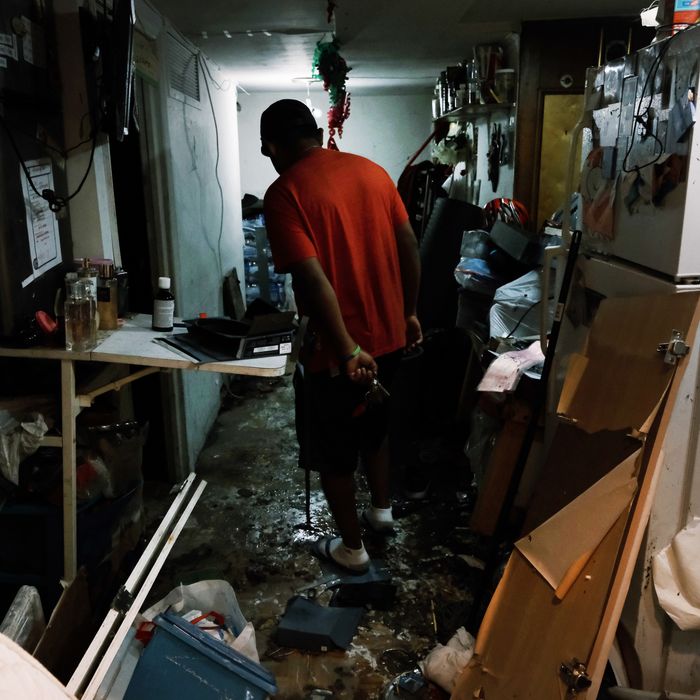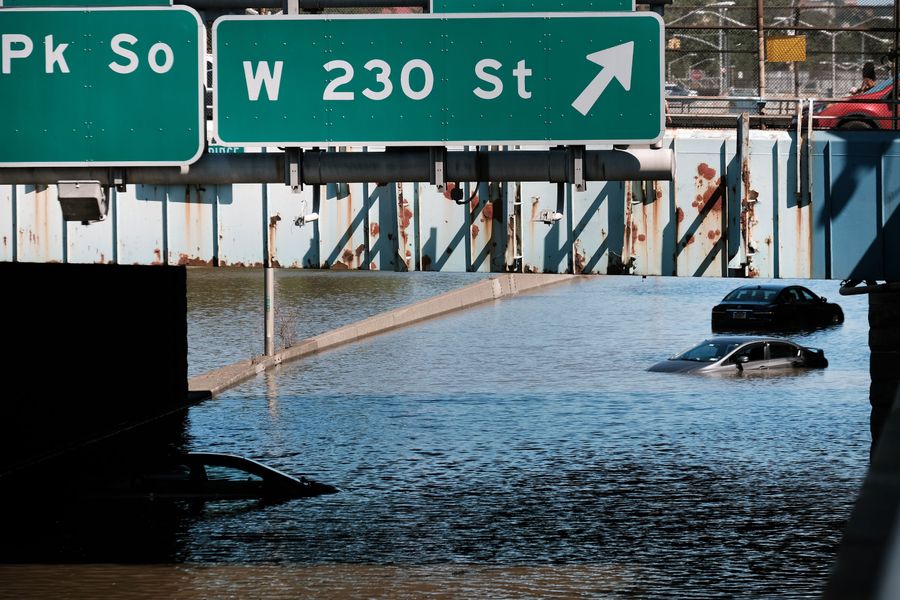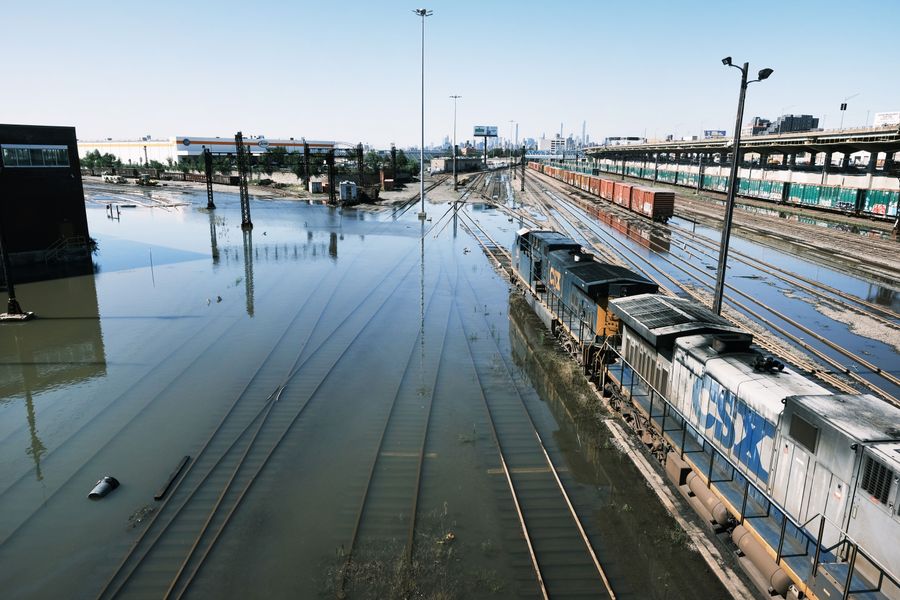Ida's Cruel Joke in the U.S. NorthEast
"The human loss, which is hard to imagine — that people simply in their cars, in their homes, in their basements succumbed to the ravages of a brutal storm.""[An update of storm systems is needed to handle more frequent flash flooding.] We're not treating this as if it's not going to happen again for 500 years."New York Governor Kathy Hochul"We're in what we call the rapid-assessment phase because we are trying to assess it from the air ...""We don't have a sense yet of what the source of sheens [from massive oil spills] might be or volumes."Stephanie Morris, spokesperson, Louisiana Oil Spill Co-ordinator's Office
 |
| Eddie, an immigrant from Mexico, walks through his flooded basement level apartment on Friday in a Queens neighborhood that saw massive flooding and numerous deaths following the heavy wind and rain from the remnants of Hurricane Ida which struck overnight Wednesday. Photo: Spencer Platt/Getty Images |
In the Northeast of the United States, what is considered to have been a 500-year-storm has left 48 people dead in its devastating wake, as Hurricane Ida blasted its way across the country. Sewer systems were unable to rise to the occasion, that saw facilities with industrial chemicals battered in New York. Some people died in their basement apartments, unable to react to the instant surge that imprisoned them in a watery grave. People on highways that suddenly were inundated by a flood surge died still seated in their vehicles, unable to escape.
While this was happening, other people in New York, refusing to be inconvenienced, continued to call out for restaurant takeouts, and delivery drivers risked the flood to deliver those orders. They also said resentfully it was a "cruel joke" they were forced to plow through water reaching above their waist level for "pathetic pay" and tips through the duration of this epochal storm and flood surge.
Sunday was the fearsome, fateful day when Ida made landfall to storm through Louisiana with 240 km/h winds. The storm surge was so intense it managed to reverse the flow of the Mississippi River temporarily as it passed through an area of the state where hundreds of chemical plants were situated. And in New Orleans, hundreds of thousands of gallons of waste water escaped from the Jefferson Parish sewer system.
Water cascaded into people's homes, engulfing cars, overwhelming drainage systems as the storm hit the U.S. Northeast. New Jersey wracked up the highest death toll, of at least 25 people, some of whom drowned when their cars were caught in flash floods. Both New Jersey and New York had spent billions in the improvement of flood defences following 2012's Hurricane Sandy. Much of that work took place on the coasts and tidal flood plains.
 |
| Cars sit abandoned on a flooded highway on Thursday following a night of extremely heavy rain from the remnants of Hurricane Ida in the Bronx borough of New York City. Photo: Spencer Platt/Getty Images |
An aircraft with photographic and
chemical detection equipment was dispatched to Louisiana by the
Environmental Protection Agency to fly over areas including a refinery
along the Mississippi River to assess the threat represented by chemical
spillages. Significant flooding at a refinery in Belle Chase, Louisiana
was seen through images taken by the National Oceanic and Atmospheric
Administration.
A
levee meant to protect the plant had been breached, enabling flood waters
to flow in, according to the Louisiana Department of Environmental
Quality. There were 100 reports of chemical and petroleum spills in all,
that Louisiana regulators are tracking.
 |
| Train tracks flooded in the Bronx on Thursday. Photo: Spencer Platt/Getty Images |
Labels: Chemical Spillage, Epic Rainfall, Flooding, Hurricane Ida, Storm Surge, U.S. NorthEast

<< Home